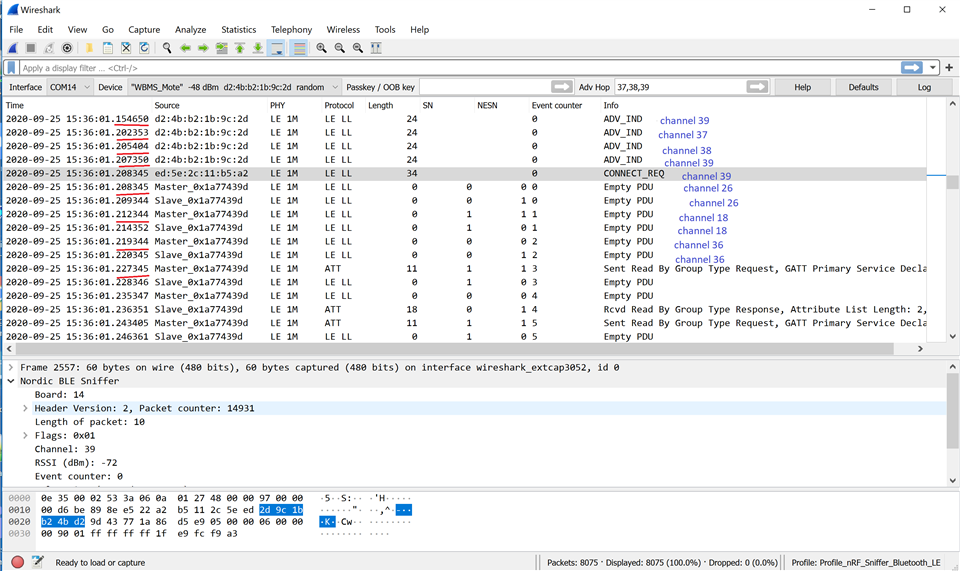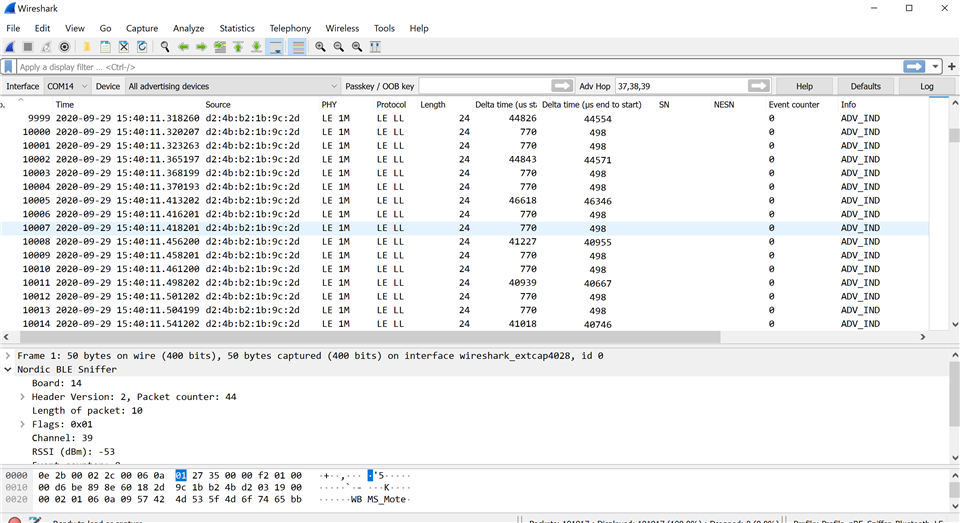Hi,
According to below thread, the advertising interval has a random 0 - 10 msec delta, so if the adv interval is 20 mses, if run it for long enough, will the result be close to 20 msec? or will be anywhere between 10 - 30 msec?
https://devzone.nordicsemi.com/f/nordic-q-a/46115/advertising-interval-time-test
I capture data using 1 nRF52840 DK and 2 nRF52840 dongles.
For the first 1000 adv, it took 818 msec in total, does it mean the adv interval is 0.818 msec? In this case, it does consume a lot of enery.
For the first 2000 adv, it took 13.709 sec, so the interval is 6.855 msec?
See screen shot below.





